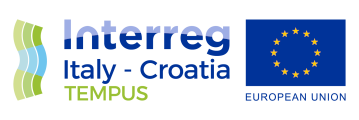The TEMPUS Toolkit (TT) is an instrument for developing heritage-driven entrepreneurship in Adriatic-Ionian port cities. It is based on the active engagement of enterprises, awareness of the importance of evolving culture through incremental innovation processes, and the creation of closer links between the quadruple-helix actors.
In port cities of the European Union, traditional industrial areas built around the port have widely been rendered obsolete at an increasing pace by the development of technology, the accelerating change of social needs and lifestyle, as well as by the life cycle of economic activities. Promoting cooperation between different levels of public authority and property owners interested in the revitalization of these areas can enhance their city’s economic prosperity and attractiveness.
Recommendations to overcome fear of change
TEMPUS has tested the effectiveness of Temporary Uses in 3 pilot cities. The results of this cross-border cooperation summarised as recommendations, can significantly support the work of the decision-makers and professionals creating new conditions in urban development. The recommendations, proposed by Local Shipyard Groups, consist of 4 key points:
Operating instruments for cultural evolution
The increasing scope of heritage policy facilitates discussion of the social effects of cultural heritage and how it can contribute to strengthening community cohesion, fostering a sense of belonging to the population as a whole, and building the capacity of citizens in pluralistic and democratic societies.
The TEMPUS project triggered two intertwined processes to valorize port cultural resources based on the development of new local entrepreneurial ecosystems deeply rooted in local traditions:
Operating instruments for incremental and disruptive innovation
For cultural policies at all levels, one of the most important topics today is the relationship of culture to sustainable development.
Recognizing the social dimension of culture and cultural diversity, the European agenda for culture (EC, 2018) emphasizes the contribution of culture to strengthening social cohesion and well-being by strengthening the ability of Europeans to actively participate in cultural activities, the mobility of professionals in the cultural and creative sector, and the protection and promotion of European cultural heritage as a common resource.
The TEMPUS project aimed to reach a real change by implementing an integrated set of Temporary Uses Actions (TUAs) focused on the idea of urban ports as melting pots of traditions, histories, activities, architectures, and cultures, which allowed creating new contextual values to be capitalized for triggering wider scale cultural resources valorization and regeneration processes.
It was first necessary to develop the basic documents:
- Capacity-building sessions reports
- Template for the entrepreneurial local maps
- Guidelines for building Entrepreneurial ecosystems business strategies
- Guidelines to establish Local Governance Groups (LGG)
Examples of implementation
In order to to achieve the set goals and design the final project outputs, partners have implemented a number of on-field activities from which relevant experience can be drawn:
- Entrepreneurial local mapping
- Two-stage exhibition design and implementation
- Open calls for heritage-driven ideas
- Perspective forums implementation
Download the full version of the TEMPUS Toolkit HERE!
